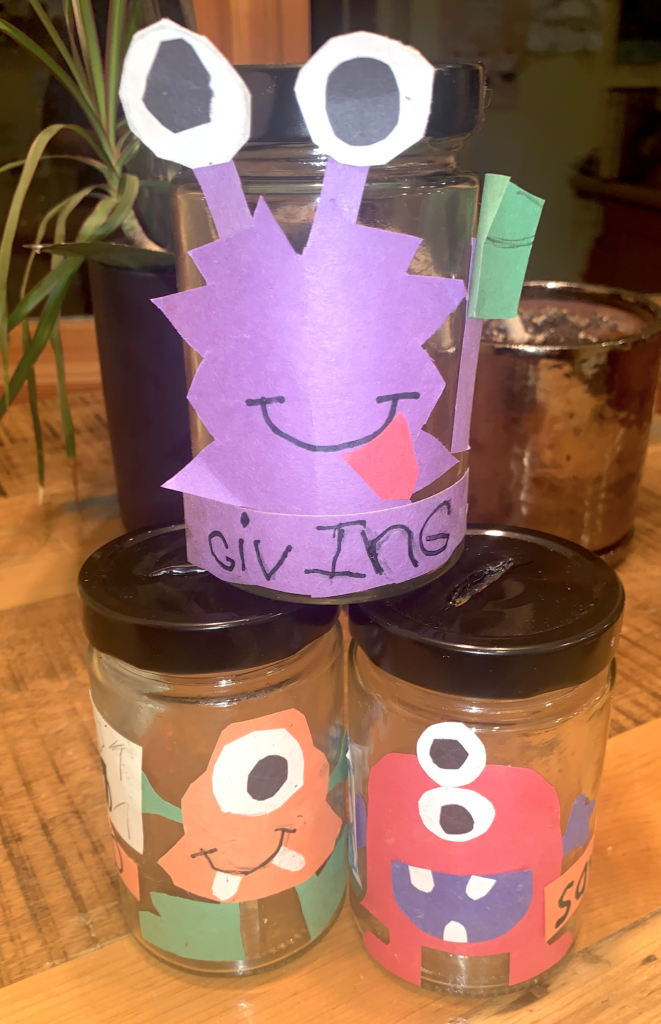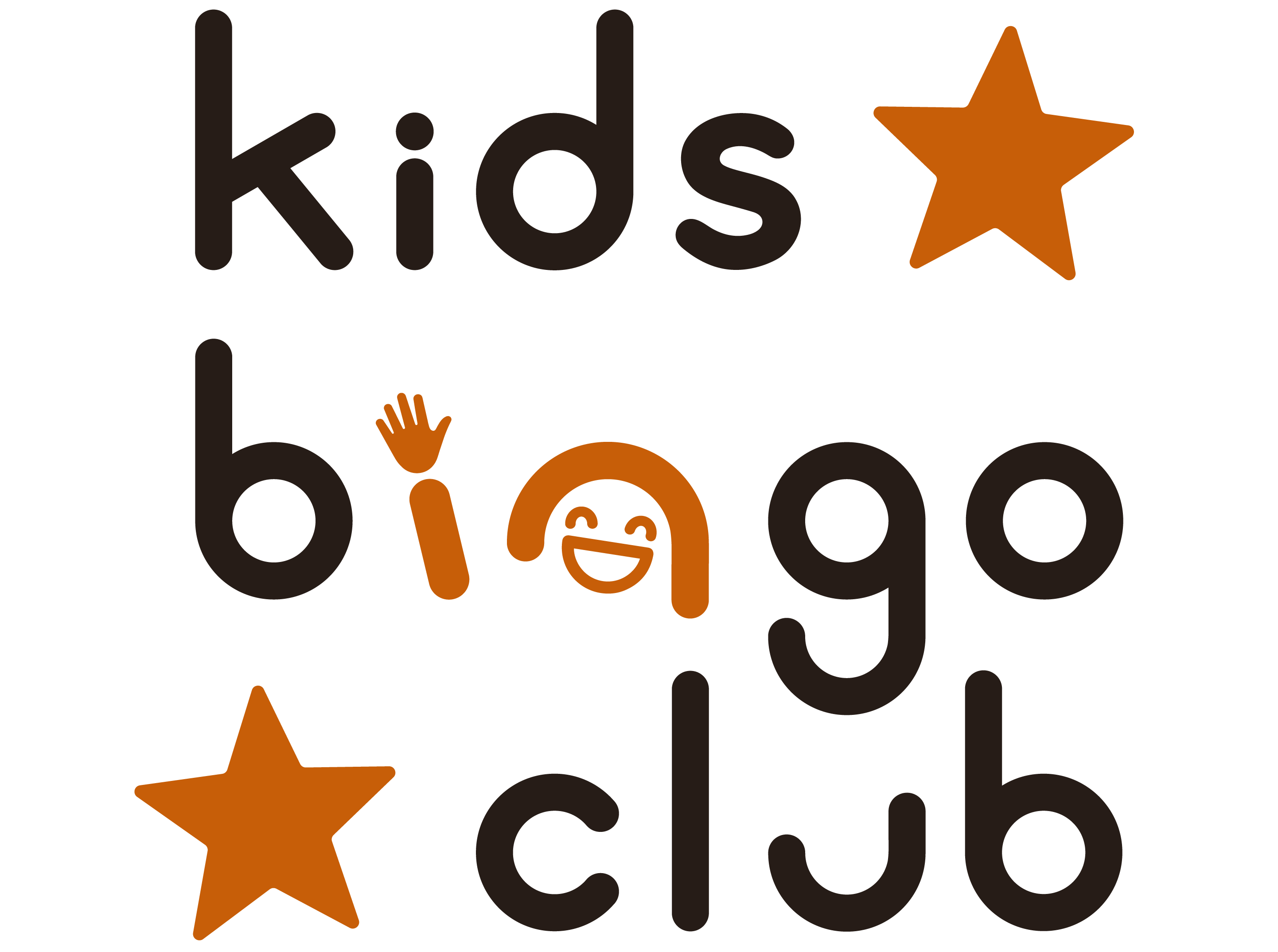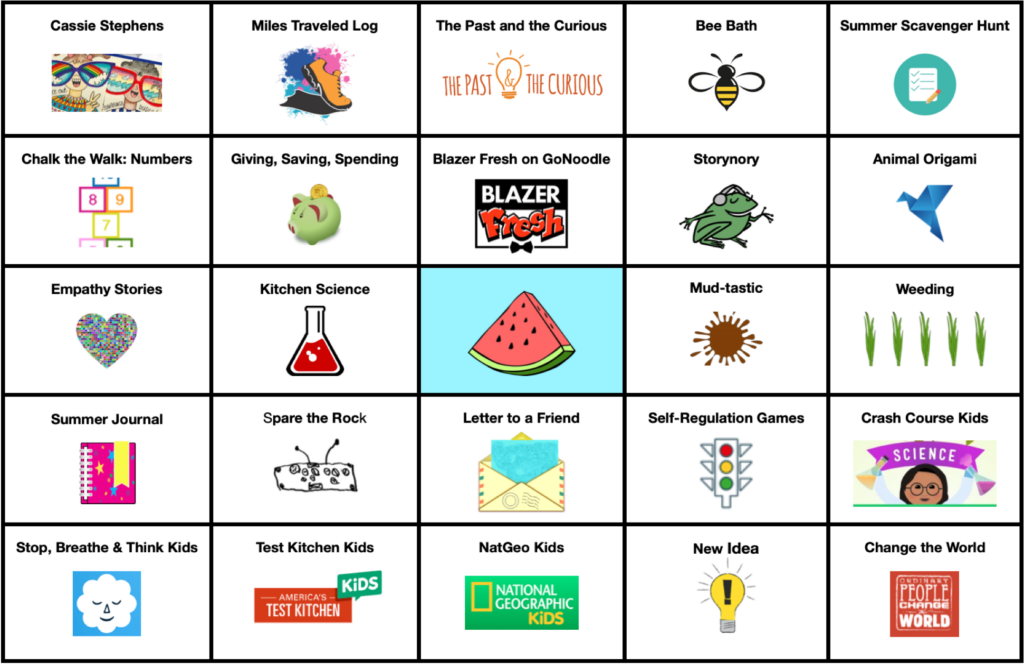Activity Resources
| Cassie Stephens: Cassie Stephens is an artist and elementary school art teacher from Nashville who posts videos of art projects you can do at home. I love how she creates theme weeks, explores mixed media and takes time to explain art concepts. Be sure to check out her We Are Woven Together activity and many Youtube playlists, including the “Summer Vacation” series. Many thanks to Ms. Yo-Jo, my kid’s kindergarten teacher, for turning me on to her. |
| Miles Traveled Log: Our elementary school’s PE teachers created a movement challenge this Spring and it’s something I want to continue in our family because I see how much “getting energy out” improve’s my kid’s well being. By using these loose approximations, we can create and display a log that tracks time spent being active plus the equivalent miles. Not only does this build an exercise routine, it’s a chance to practice math 🙂 |
| The Past and the Curious: This podcast has made its way onto many “best for kids” lists. We’ve just started to tune in at my house but after listening to the episode on the Statue of Liberty, I’m expecting more surprising twists and turns as well as poignant interludes, like the beautiful rendition of “The New Colossus” by the Kid’s Listen Players. |
| Bee Bath: My friend Sara, the most amazing gardener I know, told me about the Kruckeberg Botanical Garden just north of Seattle. In addition to their onsite programs, they have have pulled together an extensive collection of resources for young gardeners. This activity of creating a bath to cool hardworking pollinators in the summer caught my eye. It’s the least we can do for bees when you consider all they do for us. |
| Summer Scavenger Hunt: Scavenger Hunts are a great way to get outside and practice observation skills. Create your own hunt or use mine. This activity can be done in a specific time window (i.e. “how many items can you find while’s we’re at the park?”) or keep a running tally until you find them all. |
| Chalk the Walk: It’s amazing how much fun you can have with chalk. My kid loves writing numbers outside on the sidewalk with a focus that he just doesn’t bring to his workbooks. And outside we can add some movement with old school hopscotch. Or try a math game like this one on the Look! We’re Learning! blog. |
| Giving, Saving, Spending: We started tying chores to allowance earlier this year, and our child has begun making the connection between work and money. I feel we can make it more visible AND stress the importance of giving with this structured approach to kids’ finances from Dave Ramsey. The banks can be simple or elaborate. Here’s a video on the classic mason jar design from DIY Mom and an interesting LA Parent article. |
| Blazer Fresh on GoNoodle: GoNoodle has a bunch of fun videos that get kids to move. I’m partial to Blazer Fresh, who cleverly cover a variety of subjects through catchy hip hop songs, and, maybe most importantly, break down their dance moves so that even I can try. Make patterns with “Banana, Banana, Meatball“, learn about syllables with “Clap it Out” and make sure you “Don’t Read Like a Robot“. |
| Storynory: There are a ton of story focused podcasts out there, so I will explore a new one each month. I’ll start with Storynory because they were the first to record children stories for the internet in 2005, when podcasting was in it’s infancy. After 15 years, they have a huge library, with a focus on fairytales and classics. I haven’t fully explored the catalog, but we have dove into their recent Herodotus, the “first historian”, series. To keep with this quarter’s “Animals” theme, I’m also going to try Aesop’s Fables, but with caution. As a former English major, I totally geek out learning how “classic” literature, fairytales and mythology have shaped language and culture. However, that influence isn’t always a good thing. Often there are underlying messages that I don’t want to perpetuate (damsels in distress? controlling children through fear? racist and colonialist themes? NO!) So I’m going to search for classic stories that still resonate today and if we do come across something counter to my beliefs on equity, justice and empathy, we will definitely talk about it. |
| Animal Origami: My kid loves folding paper and origami is one of those things I’d like to do more often. There’s just something pure and joyful about it. It’s simultaneously simple and complex, while teaching the value of practice and precision. Special paper does exist but it’s not required. Here’s a resource from Origamiway with many animal options for various skill levels. There is also no shortage of YouTube videos on the subject if you prefer visual demonstrations. Be prepared to stop, rewind and even playback at .5 speed if you go the YouTube route. |
| Empathy Stories: I believe that having empathy allows people to be truly kind, not just because they are told they should be, but because they genuinely feel with others. With all that is going on today, empathy is more important than ever. So our family is seeking out and explicitly discussing stories that provide “windows” into the experience of others and “mirrors” with which we can examine our own feelings. Here are some interesting book lists from Brightly, Tinybop, and HuffPost. Most books can be found in libraries or online videos. |
| Kitchen Science: There are a gazillion at-home science experiments you can do in the kitchen with materials you likely have in your cabinets. Trust me I know, because we’ve watched the YouTube videos. This spring we did a few of them… oobleck, vacuum flame and the magic Ziploc bag. This month we’ll create the battle of the lava lamps…. testing salt (from Lab 360) vs. baking soda (from Curious and Geeks) to see which material produces the best results. |
| Bonus Square: It’s summer, eat some delicious watermelon. |
| Mud-tastic: Kid’s love mud. There’s something kinda primal about having your hands in wet dirt. Gardeners, Toughmudders, and those in touch with with their inner child know what I’m talking about. For this square we go back to the Kruckeberg Botanical Garden for their Dirt on Dirt module. On this webpage alone there are over a dozen options from learning composting to making mud pies. Choose your own adventure in soil. |
| Weeding: For this activity we go to the yard, the community garden or even a nearby traffic circle… where there is growth, there are weeds. Weeding is sort of like exercise, some people love it, others don’t but are happy once they’ve done it. Everyone agrees it’s necessary. Cultivating and protecting a garden is marathon, not a sprint. Why not have kids learn this early? It’s physical and educational. Here’s a great post on the educational benefits from Take Learning Outdoors, a weed identification cheat sheet from the University of California and a little inspiration from The Curious Garden, a picture book by Peter Brown. |
| Summer Journal: As a kindergarten graduate, my child’s writing skills are are starting to bud, and I’m encouraging him to chronicle his summer experience in words and pictures — especially since 2020 is sure to be a transformative year for him and the rest of us. While I’m not expecting him to create a daily journaling practice, I know how much he enjoys looking back at past creations, so I hope that creates some motivation. Perhaps we’ll also do an art project to make the journal (thanks Artful Parent) but honestly, a notebook or some stapled computer paper will work just fine. |
| Spare the Rock: I’m a life long sucker for indi-rock, so I’m told I should love Spare the Rock, Spoil the Child, a podcast for little hipsters. Looking at the playlists, they seems like an eclectic mix of kid songs, kid-friendly songs from famous performing artists, and a bunch of stuff I’ve never heard — which is sure to be exciting. Plus it’s a general reminder that life is usually better with the radio on in the background. |
| Letter to a Friend: Yeah, not a lot of description needed for this one. But as I look at old letters and cards in my nightstand drawer, I’m reminded that letter writing is a lost art I’d like to both teach to my child and rekindle in myself. So I’ll write letters along side him this summer. |
| Self-Regulation Games: One thing my kid has lost this Spring with Covid-19 is daily Social-Emotional Learning opportunities with peers and teachers. This is something my active, and sometimes opinionated, child truly needs as it provides real world practice in listening, following directions, sharing and compromise. So as he starts reengaging with friends this summer and we anticipate going back to school, I want to equip him with more strategies in this department. I found this awesome short video from Kreative Leadership explaining how everyday games can teach self-regulation skills. Red Light/Green Light anyone? |
| Crash Course Kids: With dozens of short, fun videos from pioneering YouTuber Sabrina Cruz, Crash Course Kids is a perfect way to squeeze a little bit of science into your day. This month, we’ll check out the Life Science: Ecosystems and Flow of Energy series, as it’s a great way to understand how our environment supports animals, and us. |
| Stop, Breathe and Think Kids: My husband started meditating about a year ago and I’ve been truly inspired by both his commitment to the practice and the way the experience is shaping his daily life and world view. I’m dipping my toe in and would like to help our child to explore mindfulness as well. When we’ve attempted family meditation in the past it seemed like we needed something to make the practice more kid friendly. So I’m going to try this app designed for that exact purpose. |
| Test Kitchen Kids: Learning to cook is an important life skill and my child is super interested in helping in the kitchen. We’ve done some easy dishes together and are ready for the next step in the culinary arts. My friends Noa and Sahale recommended America’s Test Kitchen cookbooks, so we are gonna check out America’s Test Kitchen Kids. They have hundreds of kid friendly recipes, categorized by difficulty, with clear instructions and pictures at each step. They also have culinary skill builders, activities and quizzes plus a podcast. Lots to dig into 😉 |
| NatGeo Kids: The National Geographic Kids website is a tremendous resource for animal videos, games and facts (as well as a lot of other interesting stuff). I think my kid will be especially interested in the Weird But True content. Doesn’t everyone want learn that queen bees quack and hippo lips are two feet wide? |
| New Idea: I always leave space for a fresh recommendation or new discovery. |
| Change the World: My kid is pretty into Xavier Riddle and the Secret Museum from PBS Kids. We’ve seen every episode many, many times, which is great because he really seems to be absorbing the lessons each “hero” illustrates. So I wanted to go a bit deeper and discovered the original book series that inspired the show. Ordinary People Change the World, by author Brad Meltzer and illustrator Chris Eliopoulos, depict each hero as both a child and an adult. There are stories on historical figures not yet covered in Xavier Riddle like Martin Luther King, Harriet Tubman, Abraham Lincoln, Albert Einstein, Sonia Sotomayor and Billie Jean King, to name a few. And I found that the books get into more detail about the hero than the series for the ones that overlap. Take the book on Jackie Robinson read on Grammy’s Book Nook which provides so much additional context about Jackie’s experience and his role as a trailblazing leader. Brad Meltzer reads a number of his stories online and both the Xavier Riddle and Ordinary People Change the World websites offer supplemental activities. The games and worksheets look fun, though I find the stories themselves the most engaging and inspirational. We are looking forward to exploring more. |
Check out this month’s board
Posts
- Bye, bye July
Well, our first month has come and gone. We experienced most items on the board and a few we’ll have to come back to later. One recent highlight was making Strawberry Shortcakes from America’s Test Kitchen Kids. This recipe was listed as “advanced” and most young kids would find it difficult to do on their own. So we did it together and he learned some introductory baking lessons. My sweetest moment was when he asked me who taught me to bake and I told him “my Mom, just like I’m teaching you”. For him the sweetest moment was eating the fruits of his labor.

Yum! We had a few other fun discoveries in the past weeks… Crash Course Kids is a great way to break up tablet usage. After a couple toy unboxing and/or lego speed-building videos, it’s time to learn some science! We also have been successfully using the bubble challenge and freeze dance self-regulation games to exercise body control. And I personally like The Past and the Curious at bedtime. While he seems to nod off fairly quickly into the episodes and might miss some of the content, I’m not sure that’s an actual problem if it helps him get to sleep 😉
In addition, my kid was super excited to create the Giving, Saving, Spending banks and really wanted to decorate them as “monsters”. We found fun construction paper designs on “Teachers Pay Teachers” and attempted our own versions without the templates, though if I were doing this with a large group of kids, the downloads would be handy.

Cute Monsters Encourage Thoughtful Money Habits Lastly, I want to share our experience with Storynory. As mentioned in the original write-up, we enjoy listening to their Herodotus series. I like how it very transparently brings together historical texts, ancient mythology and concepts from modern cultures and religions. “Bertie”, the narrator, provides various viewpoints on a topic and then asks the kid listeners to draw their own conclusions. Like could Arion really have been saved by dolphins? Be aware that some episodes discuss battles and tragedies, so it may not be for every kid (especially younger ones), but for us it spawned a bunch of interesting conversations.
I really, really, really wanted to love the other stories. Unfortunately, we found the fiction less compelling, despite wonderful narrations from actors that seem to be Shakespearean trained. My child was especially fond of Richard’s voice – check out How Love and Peace Came to the Woods, a cheeky take on an Aesop’s fable. It’s hard to put my finger on exactly why I didn’t enjoy Storynory’s other content as much. Part of it was that some stories seemed geared to older kids and some stories felt a little dated. We’ll definitely come back for future installments of Herodotus, if they are produced, but since my kid didn’t find a story series that spoke to him in the same way, we plan to check out other story podcasts for a bit.
See all posts from July

